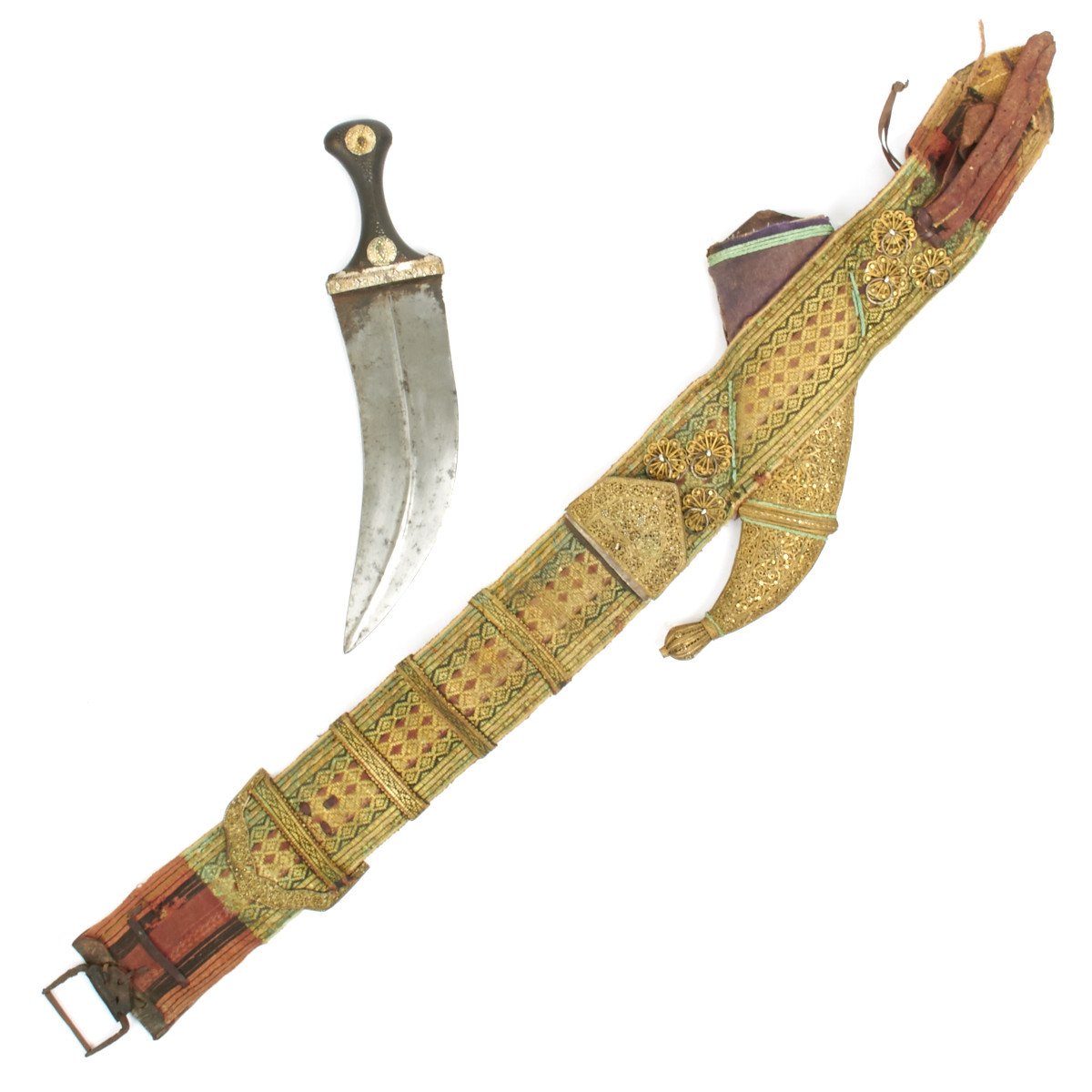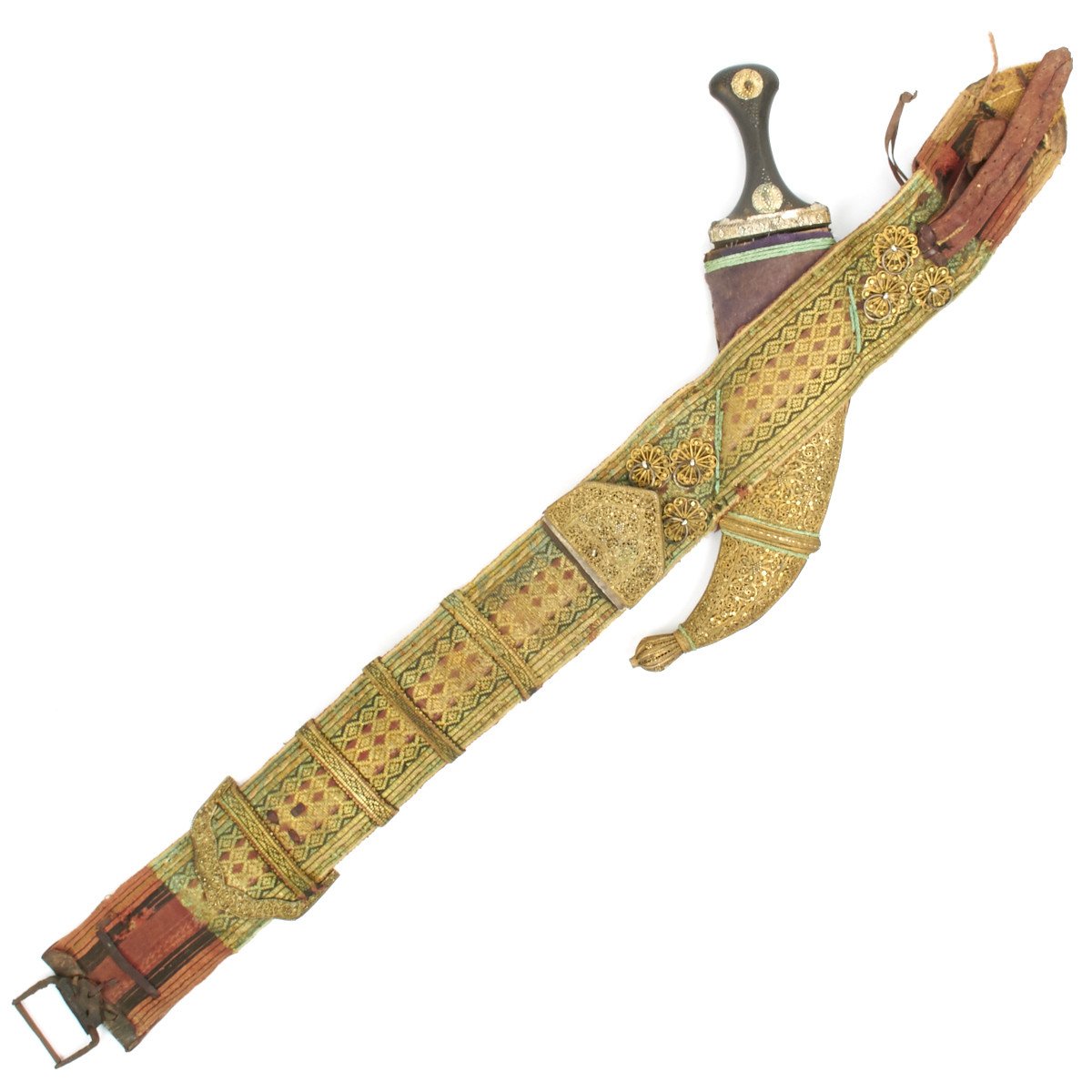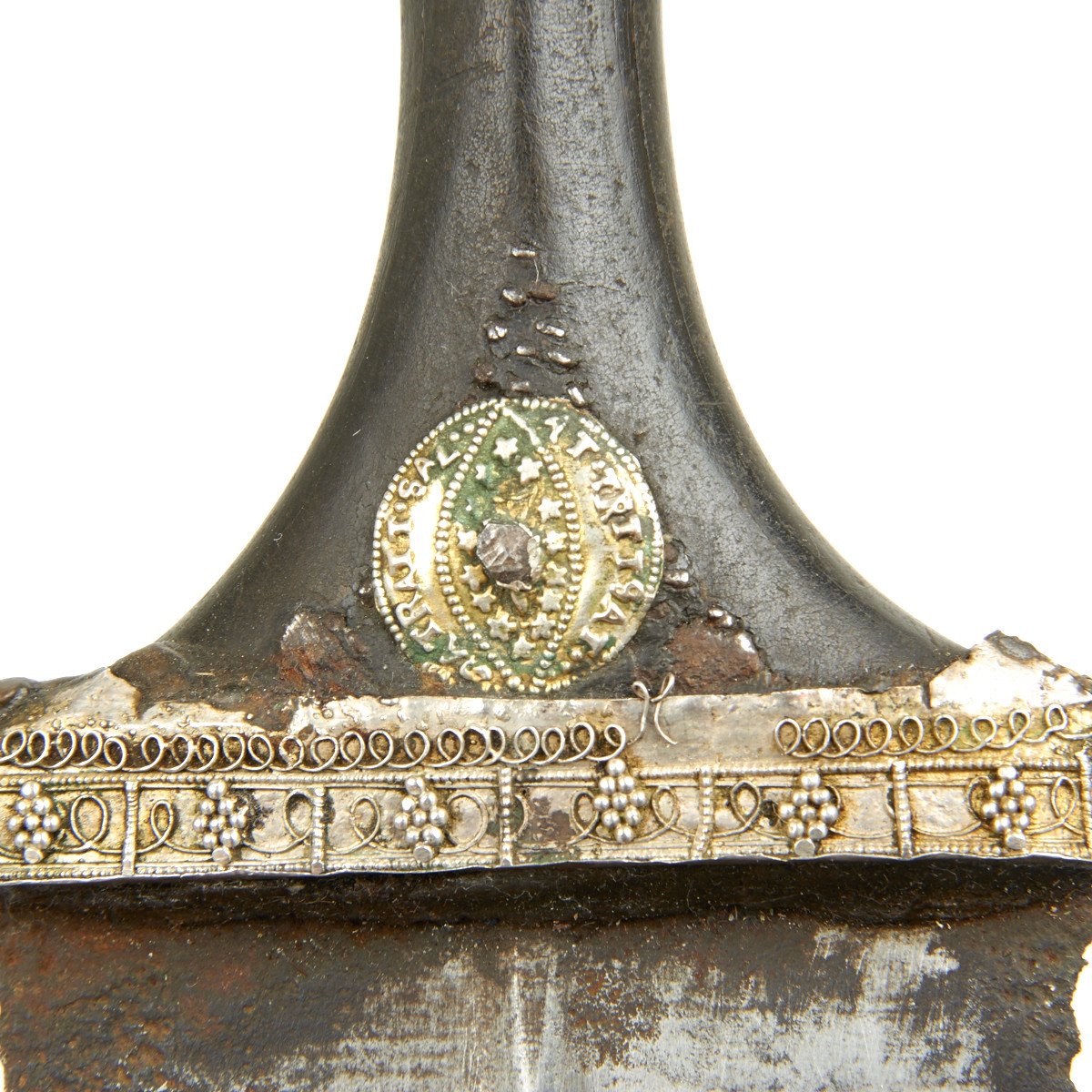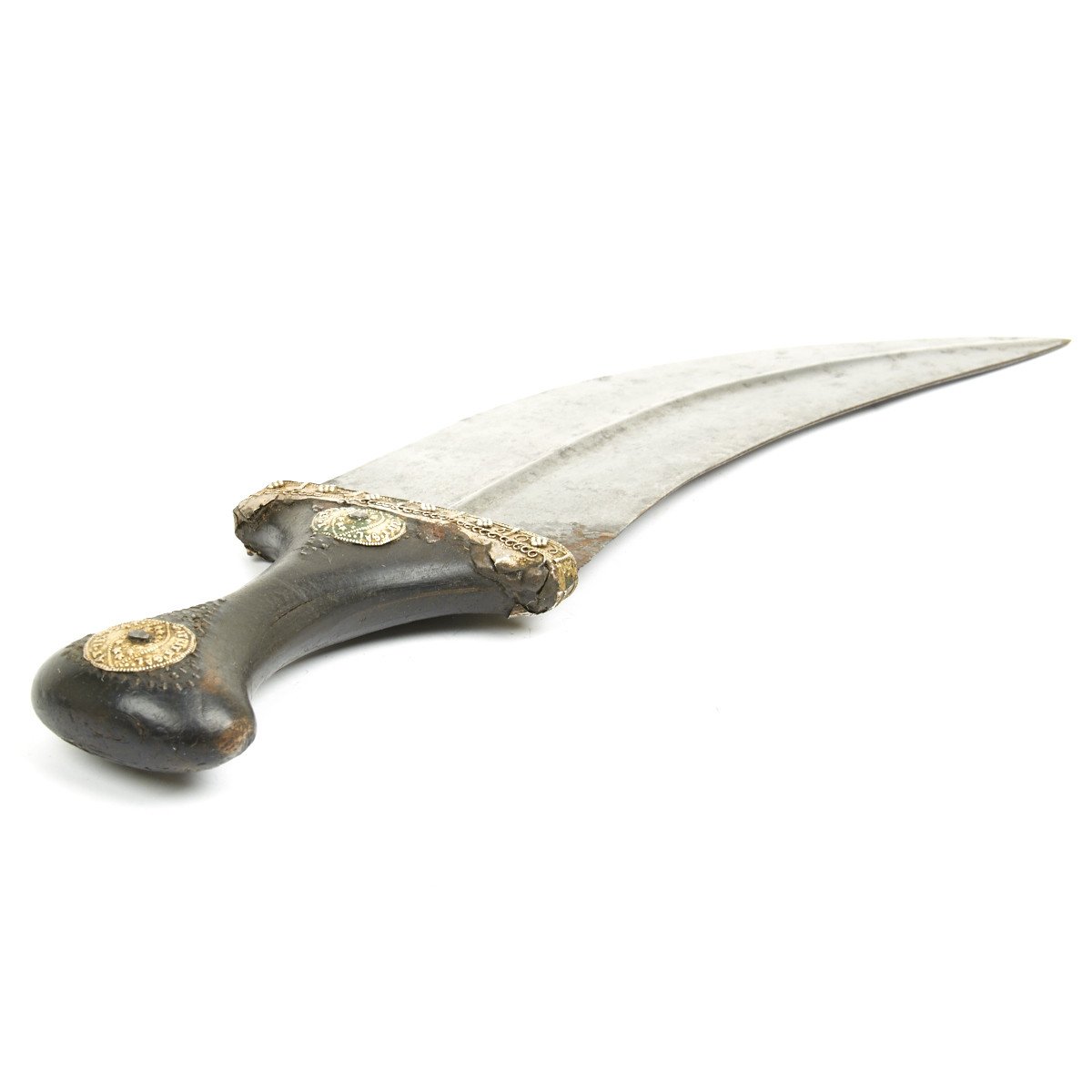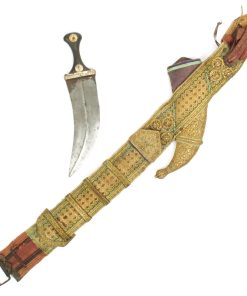Original 19th Century Arabian Janbiya Dagger with Scabbard and Belt Original Items
$ 895,00 $ 223,75
Original Items: One-of-a-kind. This is totally original and might even be older than we state. It is the classic wicked looking dagger traditionally used by Arabs of the Arabian Peninsula.
Features include a very wide curved short blade with steel re-enforcing along the blade center with a cutting edge on both sides. This Janbiya dagger is silver mounted and the hilt (grip) we rather suspect could be Rhinoceros horn that since ancient times was always difficult to attain to and very expensive so clearly this belonged to someone of note.
The scabbard is elaborately decorated with intricate patterns of gilt silverwork and the scabbard comes permanently attached to a matching highly decorated belt.
It shows age but is offered in nice display condition.
Janbiya, also spelled janbia, jambiya, and jambia (Arabic: ?????? janbiyah), is the Arabic term for dagger, but it is generally used to describe a specific type of dagger with a short curved blade that is worn on a belt. Although the term jambiya is also used in other Arab countries, it is mostly associated with people of Yemen. It is also commonly worn by islamic men in the northeast horn of Africa (primarily afars of Djibouti). Men typically above the age of 14 wear it as an accessory to their clothing.
Despite the significance of the janbiya, it is still a weapon. Although people have used it in times of dispute, there are societal and Islamic norms that must be followed in order to avoid defamation. The janbiya should only come out of its sheath in extreme cases of conflict. It is also commonly used in traditional events, such as dances.
Like with some other curved knives, as the blade bends towards the opponent, the user need not angle the wrist, which makes it more comfortable as a stabbing weapon than straight-bladed knives. Its heavy blade enables the user to inflict deep wounds and to cut through muscle and bone. It also makes it possible to cut and twist the blade upwards, slitting internal organs such as intestines, or to reach heart, lungs or liver more easily, making it a formidable and much feared weapon, whose use is thus restricted by societal rules.
The most famous sort of the janbiya is that which has a “saifani” or ivory handle. It has a dim yellowish luster. The more translucent ivory will turn a yellow color with age. This is called “saifani heart”. Some of the ivory handles are called “asadi”, when they turn into greenish yellow. When the handle becomes whitish yellow, it is called “zaraf”. There is also an albasali (onionish), kind whose color looks like that of a white onion.
Qualities of janbiya- The ivory handle janbiya is often worn as a sign of high social status. They are typically used by the Hashimites (an Arab tribe, which claims a direct bloodline to the prophet Muhammad), judges, famous merchants and businessmen. Antique janbiyas that have been worn by historic persons can fetch exorbitant prices, like that of sheikh Al-Shaif, which goes back to Imam Yahia Hameed Aldeen and was reported to have cost $1,000,000 when bought in 2008.
Fast Shipping with Professional Packaging
Thanks to our longstanding association with UPS FedEx DHL, and other major international carriers, we are able to provide a range of shipping options. Our warehouse staff is expertly trained and will wrap your products according to our exact and precise specifications. Prior to shipping, your goods will be thoroughly examined and securely secured. We ship to thousands clients each day across multiple countries. This shows how we're dedicated to be the largest retailer on the internet. Warehouses and distribution centres can be located throughout Europe as well as the USA.
Note: Orders with more than one item will be assigned a processing date depending on the item.
Before shipping before shipping, we'll conduct a thorough inspection of the items you have ordered. Today, the majority of orders will be delivered within 48 hours. The delivery time will be between 3-7 days.
Returns
The stock is dynamic and we cannot completely manage it because multiple stakeholders are involved, including our factory and warehouse. So the actual stock may alter at any time. It's possible that you may not receive your order once the order has been made.
Our policy is valid for a period of 30 days. If you don't receive the product within 30 days, we are not able to issue a refund or an exchange.
You can only return an item if it is unused and in the same state as the day you received it. You must have the item in its original packaging.
Related products
Uncategorized
Uncategorized
Uncategorized
Uncategorized
Uncategorized
Uncategorized
Uncategorized
Uncategorized
Uncategorized
Armoured Fighting Vehicles of the World: AFVs of World War One (Hardcover Book) New Made Items
Uncategorized
Uncategorized
Uncategorized
Uncategorized
Uncategorized
Band of Brothers ORIGINAL GERMAN WWII Le. F.H. 18 10.5cm ARTILLERY PIECE Original Items
Uncategorized
Uncategorized
Australian WWII Owen MK1 Machine Carbine SMG Custom Fabricated Replica with Sling Original Items
Uncategorized
Uncategorized
